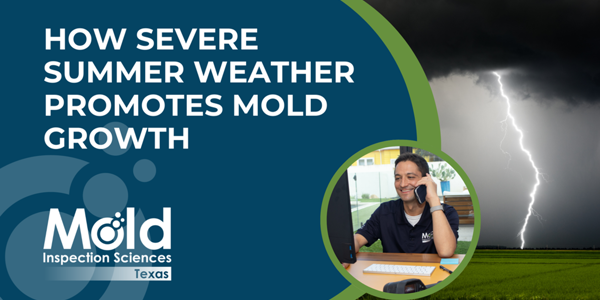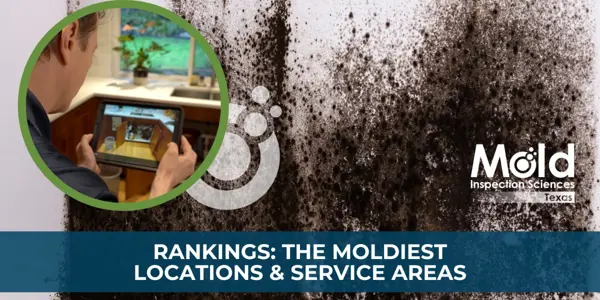How to Prevent Mold After a Natural Disaster
Explore the best strategies to prevent mold after floods, hurricanes and storm damage

Household mold is not only unsightly but also poses significant health risks. Prompt action is crucial to prevent mold growth, especially after natural disasters such as floods, hurricanes, and thunderstorms. Addressing moisture issues quickly can help control mold and protect indoor air quality.
Mold grows in various colors: white, gold, yellow, brown, black, red, and green with many shades in between. Mold spores feed on moisture and oxygen, and they can grow just about anywhere…foods, carpets, paper, woods, drywall, and other flat and porous surfaces.
Eliminating all forms of mold in your home can be a difficult task, but battling the aftermath of storm damage will keep any mold issues from growing and spreading
Precautions
Before a forecasted weather event, it’s crucial to control moisture and mold in the house. Add these tasks to your home checklist to prevent serious mold issues from developing.
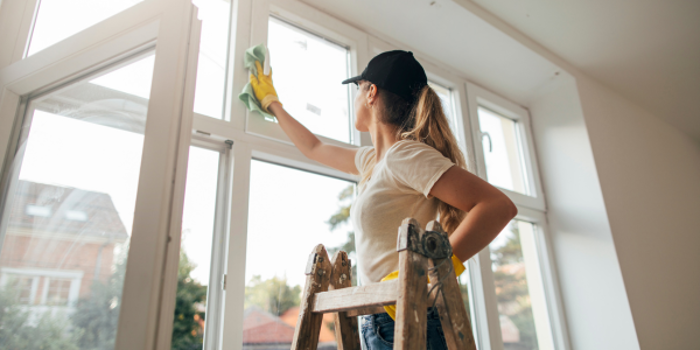
Properly ventilate your crawlspace; however, installing plastic covers over the dirt and foundation can effectively prevent moisture infiltration.
Repair seepage and leaks in the foundation. Excavation and landscaping may soak up excess water, as long as the ground slopes away from the house. Seal pipe leaks that can bring bacteria and mold spores to the home. Clean the gutters; clogs push rainwater to the home’s foundation, basement, and crawlspace.
Protect your floors. Carpeting absorbs moisture, so carpet installed over concrete floors should have plastic sheeting and subflooring underneath to keep ground moisture from seeping in. Machine-washable area rugs are best for wood flooring.
Consider your location. Location climate is a determinant for moisture problems. For example, tropical climates (like the Southern U.S.) are hot, humid, and damp. The Northeast is wet and cold. The Southwest is generally hot and dry. Wherever you live, there is one common denominator… air conditioning. When the AC runs — cooling hot air to cold — it may not remove extra moisture from the air as quickly as it cools a room.
Weather strip and caulk windows and doors. Taking this extra precaution will effectively seal entry points from outdoor moisture. Cold glass surfaces can contribute to excess indoor moisture, particularly during frosty winter conditions.
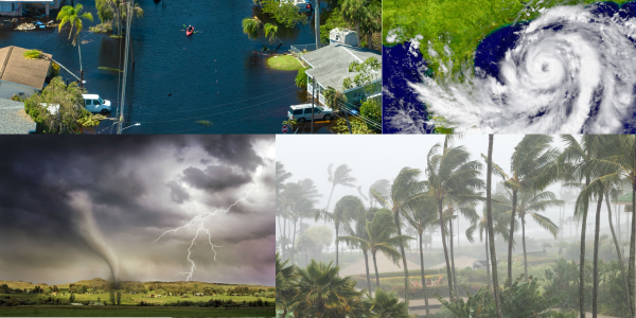
After the Storm
Thunderstorms, tornados, hurricanes, and hard rains bring moisture into the house. Rain soaking into outside surfaces of buildings can make the inside feel damp. Flooding in the yard may flow into the house, especially after severe thunderstorms, hurricanes, or tornadoes. After a severe weather event, you can typically see growing mold within 24 hours. Be sure to start remediating as soon as possible when a flood has impacted your property.
Prevent mold from growing. Dry off wet walls and water damaged areas within 48 hours. Dehumidifiers and air blowers help to absorb excess moisture. Inspect all areas of your home; mold can hide inside floors, ceilings, walls, baseboards, corners, and vents.
Remove water-soaked items, such as linens, clothes, stuffed toys, and anything else made of fabric. Some things can be cleaned, some cannot. Sort through items that look salvageable and dispose of severely damaged pieces.
Download our Free Flood Recovery Check List
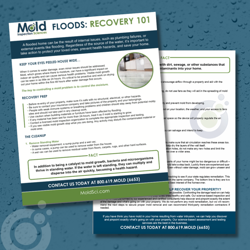
Your Flood Recovery Questions Answered
Moisture Control
Control moisture in the home to keep mold at bay. The Environmental Protection Agency suggests monitoring the humidity levels in the house and ensuring they stay between 30 and 50 percent. Humidistats are set too high if moisture collects on windows and cold surfaces.
Keep drainage systems under the house clog-free, so that there won’t be any standing water. Soggy foundations cause higher humidity levels (and the possibility that floors can buckle and warp).
Run exhaust fans in bathrooms and open windows when it’s dry outside. The house can become overly damp after long showers, cooking (steaming and boiling), and drying clothes indoors. If the water is running, the house is holding its moisture. Exhaust fans and open windows help alleviate excess moisture.
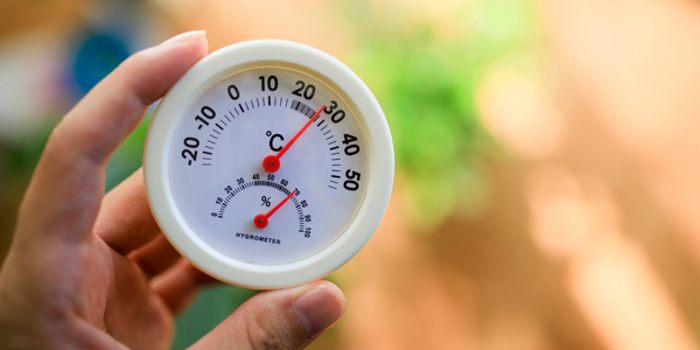
Mold Resistant Materials
Mold-resistant products may not completely eliminate mold but they will help cut down on the spores’ ability to grow. Mold-resistant drywall and paints are common in new builds and renovations. Unlike regular drywall, made with water-absorbing paper, mold-resistant drywall uses fiberglass for added protection. Moisture-resistant drywall is ideal for areas prone to humidity, such as bathrooms, basements, laundry rooms, and kitchens.
Mother Nature is predictably unpredictable. Wild weather can pop up at any time. Mold may be lurking about, even before severe weather, but can become much worse after a natural disaster. Professional mold inspection and remediation is the best way to protect your expensive investment. And it means someone else gets to do the work.

If you suspect that there may be mold present in your home — or you have questions about what to look for and what comes next. We’re here to help.

Call us on 1.888.335.6653 or send us email at [email protected]
You can also find more information about our CIRS Protocol and qPCR testing here.

